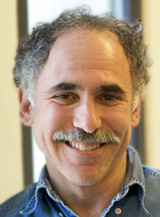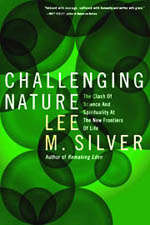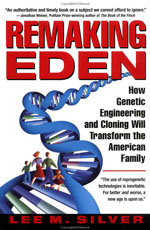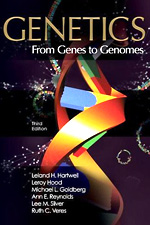|
published by Ecco/Harper Collins, 2006
|
|
Books
Presentations
Publications/Writings
Biography
Princeton Courses
|
The Washington Post
August 19, 2001
As the debate over the ethics of human embryonic stem cell research
has caught fire over the last year, there's been enormous discussion
about whether scientists should be allowed to destroy human embryos
in the process of getting these cells. Language like that portrays
scientists both as murderers who take life and as Frankenstein-like
usurpers of God's authority to make new life. Further reading
But when it comes to biology, words like "destruction,"
"creation," "embryo" and even "life"
and "death" are ambiguous. Scientists understand this
ambiguity to be a reflection of the complexity of living things.
Meanwhile, both advocates and opponents of stem cell research are
using that ambiguity to their best advantage. Take the term "embryonic
stem cell," or ES cell. Scientists coined the term about 20
years ago -- ages before the current debate -- to describe a cell
that could grow into all the cells that make up a human being. Of
course, embryos can do the same thing, so what's the difference?
To make sense of that, it helps to understand exactly what happens
during both the earliest phase of embryonic growth and the laboratory
development of ES cells -- something scientists are able to describe
with some precision. When a human embryo is formed naturally through
the fusion of an egg and a sperm, it goes through multiple rounds
of division, and after a few days, the cells on the inside and outside
begin to behave differently from each other. The cells on the inside
are the ES cells. They -- and they alone -- will grow into the fetus
and child. The "coat" of cells on the outside will develop
into the placenta, the conduit for nourishment and waste removal
that is discarded after birth.
In the natural course of development, ES cells don't last very
long. They morph within two weeks into cells with a more restricted
ability to produce a limited number of tissues or organs. In the
laboratory, however, scientists have figured out how to remove an
embryo's "coat" and get the ES cells to multiply indefinitely
without morphing into anything else. Because of their versatility,
ES cells are the darlings of biomedical research. All scientists
need to do is to identify the molecular signals and cellular environment
required to generate any tissue or organ of choice. But if lab-grown
ES cells can be coaxed to develop into any one tissue, might there
be an environment in which they could be coaxed into making a whole
human body? The answer is yes.
Eight years ago, a Canadian embryologist named Janet Rossant began
turning mouse ES cells into live-born mice. She started with a small
bunch of ES cells, provided them with a fresh pre-placental "coat"
and then placed them into a mouse's womb, where they underwent normal
development and eventually became a normal newborn mouse. Many more
mice have been developed from ES cells since then, and there is
no doubt that the same protocol could work with human ES cells (which
is not to say that there is any reason or need to do such a thing).
There's a word biologists use to describe a cell, or group of cells,
that by itself can develop into a whole animal or person: That word
is "embryo." Each random bunch of eight to 10 human ES
cells is nothing more or less than a "naked" human embryo
-- that is, an embryo without its pre-placental "coat."
Stem cell scientists have been less than eager to discuss this
tidbit of embryological lore and its implications in public, because
of the fear that equating ES cells with embryos could give ammunition
to opponents of stem cell research. Their reluctance is likely to
be even greater now that President Bush has drawn his own moral
line between research on existing ES cells, which he deems acceptable,
and direct research on embryos, which is deemed unacceptable. But
it seems to me that the president's moral line has been drawn between
a basket of unpeeled apples and a basket of peeled apples -- the
difference between the two is in appearance only. With the political
debate at fever pitch, I have no doubt that some scientists will
challenge my interpretation here, but it will come down to an argument
over words, not biology.
Ironically, the same interpretation of ES cell/embryo equivalence
can be used just as readily by advocates of stem cell research to
bolster the case for allowing federal funds to be used for extracting
ES cells from unwanted embryos sitting frozen in IVF clinic storage
tanks. ES cell research won't actually destroy these embryos, it
will save them from an otherwise certain death. Not only can these
embryos be preserved indefinitely (as living ES cells), but their
use could lead to therapies down the road that will save the lives
of many other people as well. Thus, lives will be saved without
any lives being lost. As I write this, I'm fully aware that I, too,
am using language in a way that best supports my position.
This brings me back to the question at the heart of the stem cell
debate. Is a one-week-old human embryo -- a ball of cells smaller
than a pinhead -- a form of human life that deserves our respect
and protection? The problem with this question is that, of all the
terms used in biology, "life" is the most ambiguous. And
without a clear definition of "life," the question of
respect is meaningless.
At this point you may be thinking, how hard can it be to distinguish
between what's alive and what's dead? To which I say, consider what
happens right after a man is shot to death with a bullet to the
head. We can all agree that he is dead, but for at least a few hours,
99 percent of the cells below his neck are still very much alive.
Indeed, his organs can continue to function for many years if they
are transplanted into the bodies of other people, and some of his
cells can survive forever in laboratory incubators. When I say that
the person is not alive, it is in the sense that he no longer exists
as a sentient being. But when I say his body is still alive, I am
using the same word "alive" in a general cellular sense.
Aristotle recognized the difference between vegetative life and
conscious life more than 2,000 years ago, and physicians today commonly
use the term "persistent vegetative state" to describe
human bodies that have lost higher brain function and, with it,
the potential to achieve a sentient state.
Is a one-week-old human embryo alive? The answer is clearly "yes"
if we use the cellular or vegetative definition. And it is just
as clearly "no" if we use the definition of sentience.
Normally, we don't give much respect to cellular human life -- we
shed skin cells without a thought -- so why should we respect a
microscopic human embryo?
According to the Catholic Church, every human embryo deserves as
much respect as you or I because it contains a God-given human soul
or spirit. Indeed, when people ask whether an embryo is alive, often
what they really want to know is whether it has a soul. But how
do you calculate the number of souls in a petri dish containing
10 million human ES cells? The problem is that cells can be grouped
together in bunches of eight, nine or 10 to form embryos, and depending
on the size of the average bunch you make, the number of embryos
in the dish at any moment can vary by hundreds of thousands. Counting
embryonic souls is akin to counting the number of angels dancing
on the head of a pin. Whatever the number, the idea that an embryo
has a soul is a matter of religious faith, not science.
Until recently, the most persuasive secular argument for protecting
embryos had been that embryonic cells are different in some fundamental
way from all other cells in your body because they alone have the
potential to form a sentient being. The assumption was that all
other cells were irrevocably chained to the narrow task assigned
to the particular tissue or organ in which they were placed.
But within the past three years, this view of cell biology has
been proven false. Scientists have discovered the molecular keys
required to unlock an amazing plasticity in cell identity. Brain
cells have been turned into blood cells, fat cells have been turned
into bone, muscle and cartilage, and other examples of cell conversions
are flooding the scientific literature. Of course, none of this
is referred to as cloning, although that's exactly what it is. It
is only a matter of time before scientists uncover the mother of
all molecular-conversion keys: the one that transforms an adult
cell directly into an ES cell. In philosophical quarters, that discovery
should be a lethal blow to the idea that potential alone is a sufficient
criterion on which to base the granting of respect and protection:
even skin cells will have the potential to become babies. In political
quarters, scientists will claim that by bypassing embryos in their
production of ES cells, they will have eliminated all ethical objections
to the research and its applications. And in the world of medicine,
clinicians will eventually be able to provide replacement tissues
and organs produced from a patient's own cells, which will not be
rejected as foreign by the patient's body.
Most scientists will continue to avoid the use of contentious terms
like "embryos" and "cloning," and maybe opponents
will as well. Instead, they will focus on more palatable terms like
"cell therapy" and "tissue renewal." And it
won't be the first time. The classic example of shifting terminology
as a method of public appeasement was the substitution of "magnetic
resonance imaging," or MRI, for the original scientific term
-- "nuclear magnetic resonance," which was thought to
be less than patient-friendly.
If taking the "nuclear" out of MRIs or saying "ES
cell" instead of "embryo" results in a greater acceptance
of the science, that will lead to a healthier population in years
to come. And that's not such a bad thing.
|
Hover over or click on books to order from Amazon.com
|



